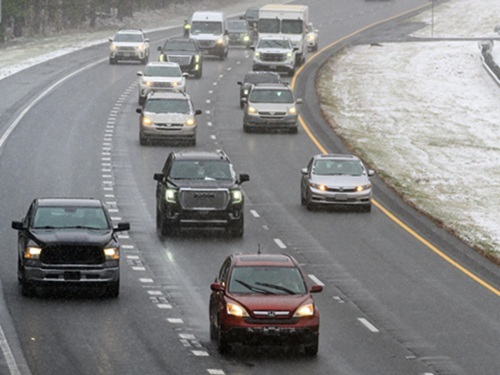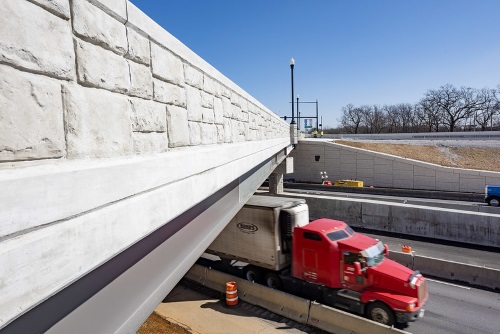A 43-page report issued by the Congressional Budget Office on October 17 examines whether a federal vehicle miles traveled or VMT tax on commercial trucks can help sustain the Highway Trust Fund, which the CBO projects will be “exhausted” of funding by 2022.
[Above photo by the Arkansas DOT.]
“A federal VMT tax on trucks could provide additional revenues to the HTF; it could also substitute for existing taxes on trucks that are credited to the HTF,” the agency noted in a statement. “However, implementing a VMT tax would impose greater costs on the federal government and trucking companies than increasing existing taxes.”

To successfully establish a truck VMT tax, the CBO said in its report that lawmakers would have to consider the tax base, the structure of the tax rates, and how the tax would be implemented. The agency added that it analyzed 2017 truck traffic data to examine how differences in those three factors would have affected VMT truck tax revenues in that year.
First, the agency said two key choices need to be made about the VMT truck tax base: which type of commercial trucks would be taxed and from what roads – all public roads; just interstate highways and other arterial roads; or interstate highways only – would mileage data for the VMT tax be gathered.
For example, “combination trucks” – where a commercial vehicle is pulling one or more trailers – represented 28 percent of commercial truck traffic in 2017 but accounted for more than 60 percent of the miles traveled by such trucks. Likewise, in 2017 travel on interstates accounted for 41 percent of the miles traveled by all trucks, but accounted for more than half of the miles traveled by combination trucks.
Second, a uniform tax rate could be applied to all travel by all trucks included in the tax base. Alternatively, the miles traveled by trucks could be taxed at different rates on the basis of one or more factors: vehicle type or configuration (such as single-unit versus combination truck), vehicle weight, or weight per axle, plus location or location and time of travel.
Finally, the issue of how “taxable mileage” by trucks gets assessed revolves around three main technological options: gathering data via odometer readings; using radio-frequency identification or RFID readers to tally mileage data; or use some sort of onboard device.
 Nation
Nation
Registration Open for AASHTO’s Winter Rail Meeting
December 19, 2025 Nation
Nation

